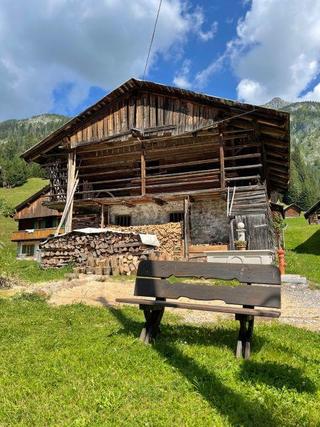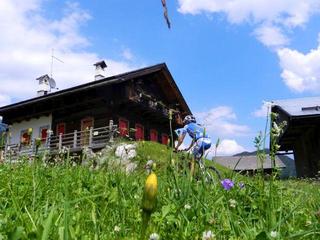
Ecche Village
Ecche Village gets its name from a word in the Sappada dialect that describes the profile of the land (i.e., ekke, which means "corner" or "knoll"). lt is among the few villages that stilI today retain a certain geographical separation from the surrounding ones. lts historical center is located on a sunny knoll of the northern side of the valley, adjacent to the gorge of the Puiche stream, at an average altitude of 1275 m. The village, therefore, is considerablly higher in altitude compared with the other settlements.
Currently the village is going through a phase of urban expansion thanks to the construction of severaI sets of townhouses a little below the old center. The small shrine dedicated to St. Anthony of Padua, also known as Ekkarmaindl, was constructed in 1930 after the demolition of another chapel that stood in the center of the village. Another smaller niche chapel, dedicated to St. Notburga (Notpùrgamaindl), was erected in 1897 alongside the old access road that ran just below before turning and reaching the village from the East. Farther downhill, another small niche chapel dedicated to St. Theresa (Teresa maindl) was built next to the new road in 1927.
Considering the modest size of the village, the traditional buildings are few but virtually all of them are noteworthy. Particularly remarkable is the 19th century s'Nàntn two-family house near which stands the village fountain. Worth mentioning is also the Khàttilan Aingile house, a classic type residence that has remained almost unchanged.
At the Eastern end of the village, along the downward slope that leads to the Puiche stream, one can also find a Prèchlloch, an ancient walled pit for the maceration of the linen.



